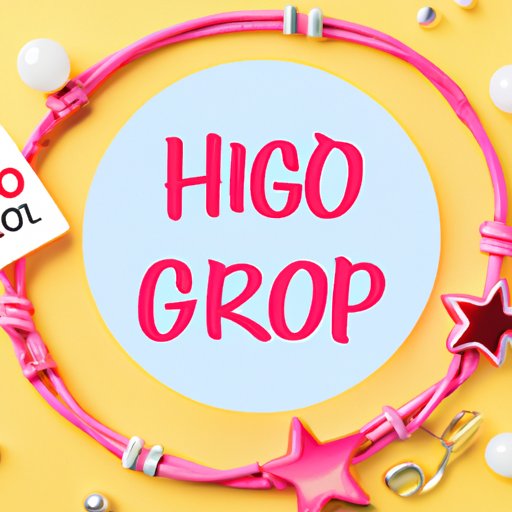
I. Introduction
Promotion plays a crucial role in any marketing campaign. It’s all about getting the word out and generating interest in your product or service. In this article, we’ll explore what promotion is, its importance in a marketing mix, different types of promotion, data-driven approaches to promotion, and creative ways to stand out in a crowded market.
II. Promotion 101: Understanding the Basics of Marketing Your Business
Promotion in marketing refers to any activity that is used to communicate the benefits of a product or service to potential and existing customers. It is one of the four components of the marketing mix, along with product, price, and place. The primary goal of promotion is to generate awareness and interest in your product or service and ultimately drive sales.
Although advertising is often used interchangeably with promotion, it is just one of the many tools used to promote a product. Other forms of promotion include personal selling, sales promotion, and publicity. Personal selling involves face-to-face communication with potential customers, while sales promotion includes tools like discount codes, free samples, and loyalty programs. Publicity refers to the use of media coverage to generate positive coverage for your brand.
III. From Discount Codes to Influencer Marketing: The Various Forms of Promotion Explained
Let’s take a closer look at the different forms of promotion.
Personal selling: Personal selling can involve in-person communication, such as attending trade shows and events, or remote communication, such as phone and video calls. Personal selling often requires a high level of product knowledge and a good understanding of the customer’s needs to be effective. It’s often used in high-value sales situations when the customer needs a more personalized approach.
Sales promotion: Sales promotion includes tools like coupons, discount codes, free samples, and loyalty programs. Their goal is to incentivize customers to take action and try your product. Sales promotion is often used to boost sales in the short term.
Publicity: Publicity involves generating media coverage for your brand or product. It can be done by pitching stories to journalists, bloggers, and influencers or creating sharable content that can go viral on social media.
Influencer marketing: Influencer marketing is a relatively new form of promotion that involves partnering with individuals or organizations that have large social media followings to promote your product. Influencers can be bloggers, Instagrammers, YouTubers, or celebrities. They are often trusted by their followers and can bring a lot of attention to your product.
IV. Promoting Your Product: How to Win Customers and Increase Sales
Here are some practical tips and strategies for creating effective promotions:
Know your target audience: Understanding your target audience is key to developing an effective promotional strategy. You need to know who they are, what they value, and where they spend their time to create messages that resonate with them.
Set goals: Before launching a promotion, define your goals. Do you want to boost sales in the short term, or are you looking to generate long-term customer loyalty? Having a clear goal will help you create more effective promotions and measure their success.
Use data to inform your strategy: Data is your friend when it comes to promotion. Use it to identify high-performing promotions, analyze customer behavior, and optimize your strategy. Collect data through surveys, social media analytics, and customer feedback to continuously improve your promotions.
V. The Science of Promotion: Exploring the Data-Driven Approach to Marketing
Data and analytics are becoming increasingly important in creating effective promotions. Here are some tips for measuring the success of your promotions:
Set clear objectives: Clearly define what you hope to achieve with your promotion. Whether it’s an increase in sales or brand awareness, your objectives should be specific and measurable.
Track your metrics: Identify the metrics you want to track and use tools like Google Analytics, customer surveys, and social media analytics to measure your success. Some key metrics to track include website traffic, sales, social media engagement, and email open rates.
Monitor your competitors: Keep an eye on your competitors and analyze their promotions. You can use this information to identify areas of opportunity and areas where you can differentiate yourself.
VI. Rethinking Promotion: Creative Ways to Stand Out in a Crowded Market
Promotion can be difficult in a crowded marketplace. Here are some creative ways to stand out:
Create sharable content: Create content that your customers will want to share with their friends and family. This can include blog posts, social media updates, and videos.
Partner with other businesses: Partnering with other businesses can be a great way to reach a new audience. For example, a gym and a supplement company might partner to promote each other’s products.
Create a sense of urgency: Creating a sense of urgency can encourage customers to take action. Limited-time offers, flash sales, and countdown timers can all create a sense of urgency.
VII. Conclusion
Promotion is an essential part of any marketing campaign. Understanding the different types of promotion and the strategies for creating effective promotions is critical to generating interest and driving sales. And in an increasingly data-driven world, promotions that are informed by data and analytics are even more critical. By taking a creative approach and thinking outside the box, you can stand out in a crowded marketplace and win new customers.




